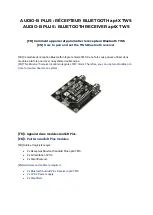
formed and twice for each dash. In a perfectly formed character the rhythm of the
flashes will be uninterrupted.
SECTION VI
THEORY OF OPERATION
6-1.
GENERAL
The keyer forms dots and dashes by the use of digital circuitry and logical
sequencing. Basic speed and mark-space ratios are established by a keyed multi-
vibrator that operates continuously as dots and dashes are keyed to form a letter.
Dashes are formed by adding the output of this time base (dot) generator with the
output from a scale-of-two circuit. So formed, the dashes are always at the
correct speed and mark-space ratios, as illustrated by figure 6.
6-2.
CIRCUIT DESCRIPTION AND OPERATION
1
Tube V1 is an astable (free-running) multivibrator which is keyed by series
triode tube V2A. Positive feedback from V1A plate through resistor R16 holds V2A
conducting after a momentary contact of the key lever to produce self completing
dots. The dots are uniform whether momentarily initiated or fully keyed, as in a
series. Speed is controlled by positive grid bias adjustment potentiometer R9.
Speed range is determined by the selection of grid return resistors R1 and R6, or
R2 and R7. Mark-space ratio is adjusted by differential grid resistor R8, with no
effect upon speed.
Tube V3 is a triggered bistable multivibrator, or a scale-of-two circuit. When
keyed by series triode tube V2B, it may be triggered by a negative pulse formed at
the start of a dot from the plate of V1B. When so triggered, the plate of V3B will
flip and remain positive until another negative pulse is received. Operating in this
manner, it forms half-speed dots which are added to the output of V1 and drive
the relay tube V4A to form perfect dashes.
1
Patent Application Pending
Summary of Contents for HA-1
Page 1: ......
Page 9: ...Figure 5 Relay Contact Protection Chart...
Page 14: ...Figure 7 Model HA 1 Rear Oblique View Figure 8 Model HA 1 Bottom Chassis View...
Page 18: ......
Page 19: ......





































